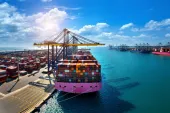Collaboration is key for Hong Kong port operations
By Won-Joon LeeHong Kong ports have benefited greatly from the region’s thriving trade activity in recent years. But now, the irregular economic ups and downs of the global market and industry changes may threaten future success.
To succeed in this new environment, a different strategy must be embraced – collaboration.
According to The Government of Hong Kong Census and Statistics Department, while the U.S. economy has fared better than expected and the eurozone sovereign debt crisis has stabilized somewhat, the two region’s still weak economies are expected to continue to weigh on their import demand, potentially impacting Hong Kong trade.1 Yet, the continuing shift of global trade favors the ports in Asia.
Of the 10 busiest ports in the world in 2010, nine are in Asia and six in China.
At the same time, shifting economics is transforming the industry. Shipping routes are changing and vessel sizes are growing to accommodate increasing volumes. This in turn is leading to the need for investment in more infrastructure, such as birthing capacity, cranes and rail access to handle larger vessels. And, shipping companies are forming new alliances as a way to adjust to sector changes and remain competitive.
For port authorities and operators, changing customer needs are placing greater pressure on margins as they try to cope with potential expansion needs, while striving for increased productivity and efficiency to more effectively compete. Adding to this challenge are pressures from falling industry net incomes and margins, forcing ports to reduce handling charges per cargo container TEUs, and the rise of competition from multiple global terminal operators vying for market share.
To overcome these challenges, port operations can no longer afford to operate as islands, but must collaborate with a variety of sector participants, including shipping and logistics companies, shippers, consignees, rival terminal operators and other ports. And, they must differentiate themselves in the eyes of the customers by identifying and developing new services that will set them apart from competitors.
There also are other actions operations should take to support this strategy. Companies should assess and review their business processes and the business environment in which they operate. For port authorities in particular, conducing market-entry assessments, and developing areas, such as eCommerce, financial performance management, analytics, and operational effectiveness will be key.
Technology investments will be an essential tool for operators to manage and conduct their operations efficiently. Large-scale implementations of enterprise resource planning (ERP) and terminal operations software will greatly aid efficiency.
As port operations evolve, they will become more complex to manage. Many operators have cobbled together a patchwork of different legacy systems to handle point functions, such as human resources, finance and procurement.
As a consequence, terminal operators are left with functional silos that can clog and impede an organization’s efficiency. Effective terminal enterprise management focuses on integrating key processes that enable smoother collaboration and flow between customer service, terminal operations and billing, resulting in greater efficiency at lower cost, laying the foundation for future expansion.
Finally, cost-effectiveness today is as important as productivity and customer service. There are five transaction-oriented processes companies can adopt to manage cost. They include customer relationship management to enable delivery of tailored processes; analytics to aid forecasting, scheduling and hotspot management; scenario analysis to support decision-making and resource deployment; cost analysis to safeguard the bottom-line; and process integration.
Stay the Course
Changes in the ports industry are likely to continue for the foreseeable future. Hong Kong port authorities and operators will need to collaborate more with sector players and adapt to these changes to remain on course toward high performance.
Reference:
1. The Government of the Hong Kong Special Administration Region, Census and Statistics Department, Press release on Statistics, Feb 2012 https://www.censtatd.gov.hk/press_release/press_releases_on_statistics/index.jsp?sID=2931&sSUBID=20558&displayMode=D




















 Advertise
Advertise








